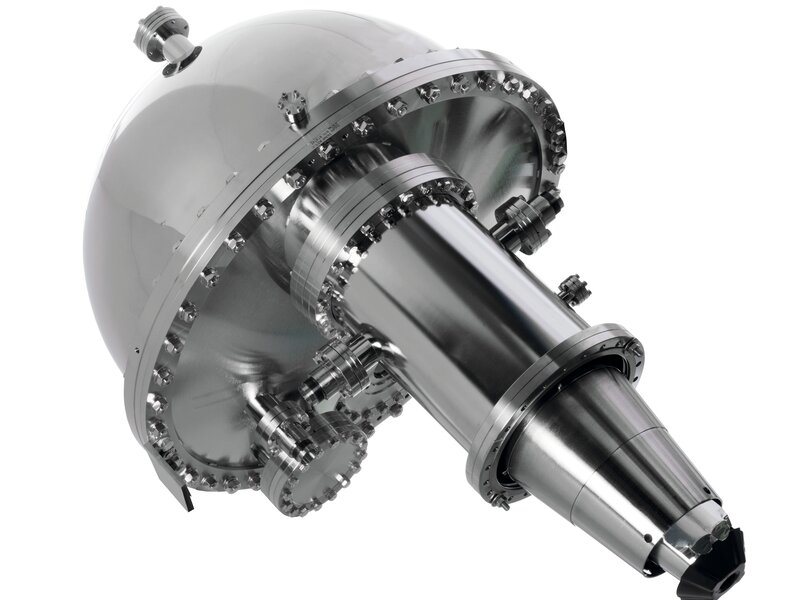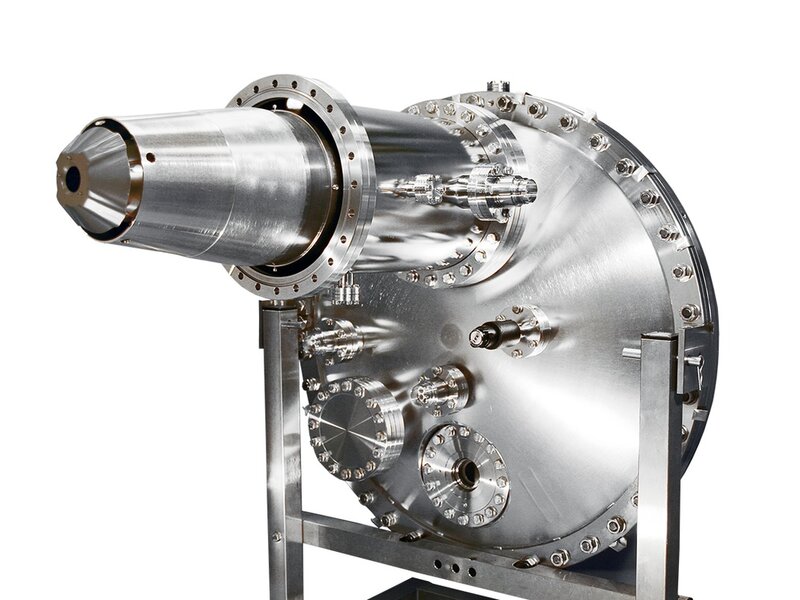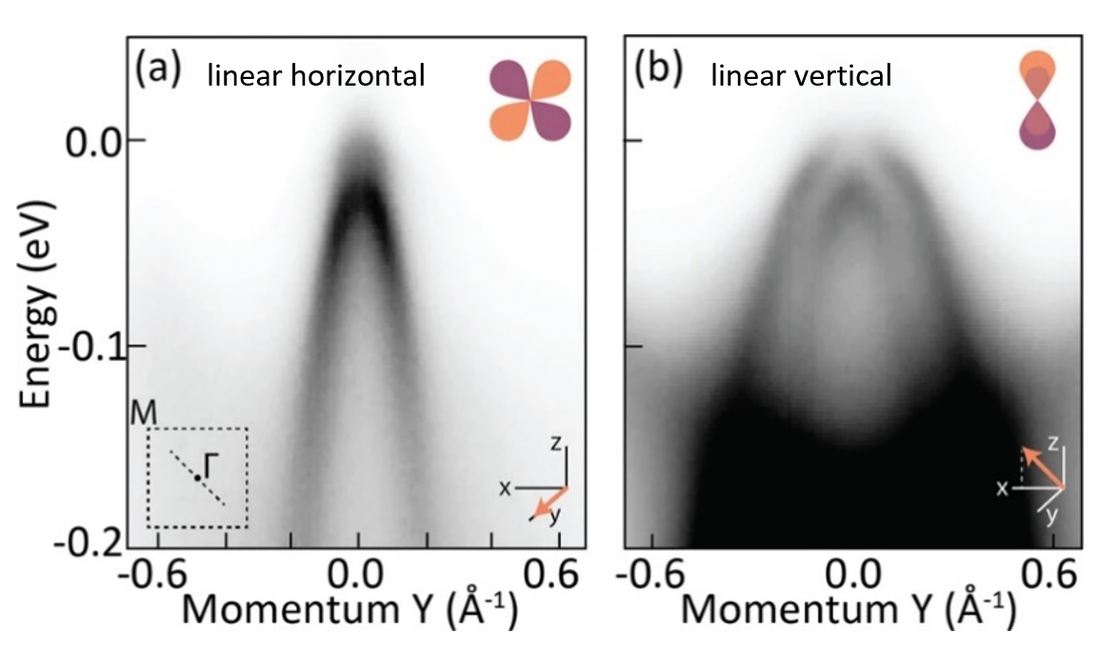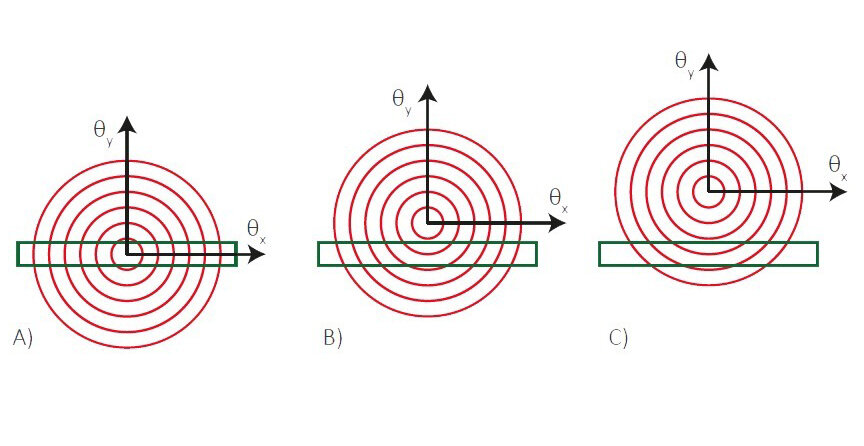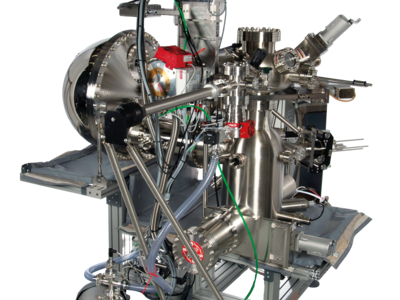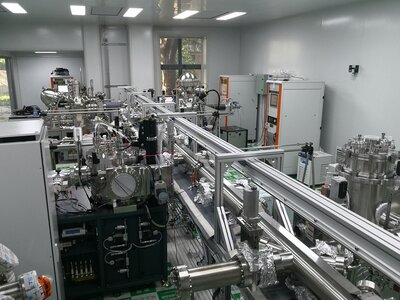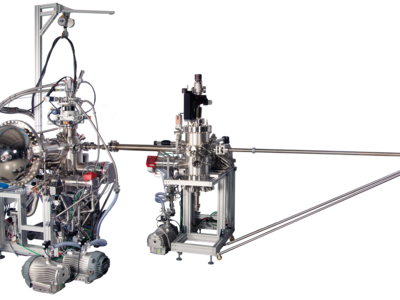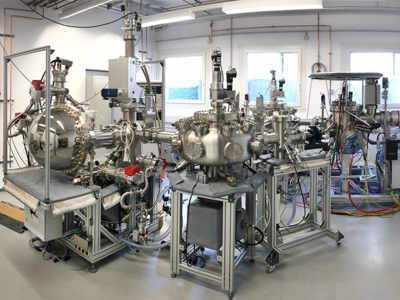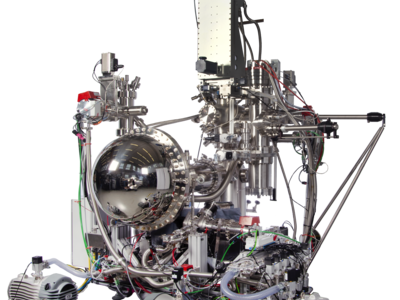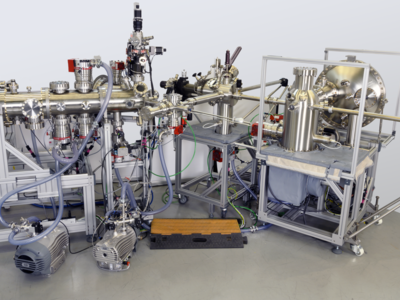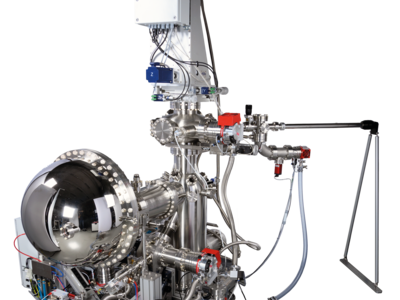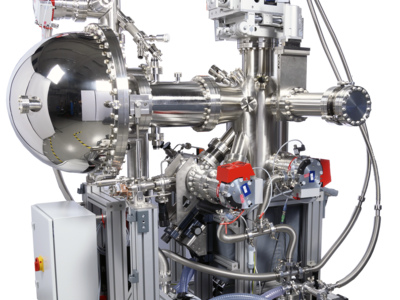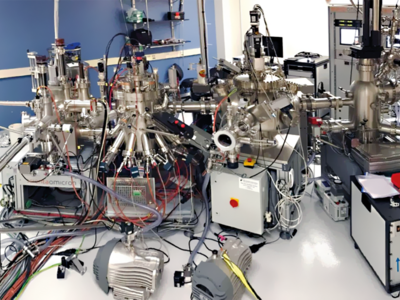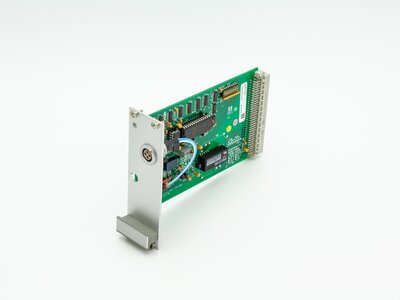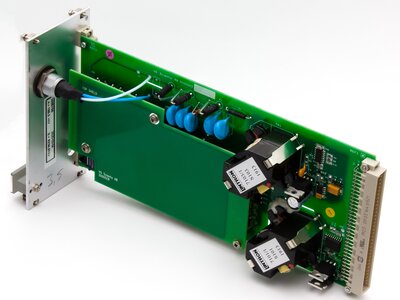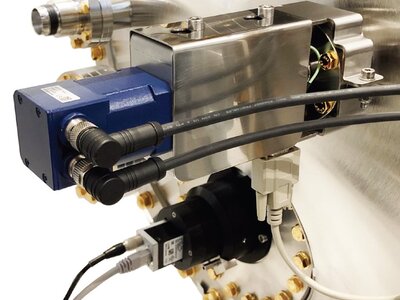DA30-L
First Deflector Analyser Preserving Measurement Geometry
PES ARPES HR-ARPES μARPES Spin-ARPES UPS
- 30° full cone acceptance without sample rotation
- Spin-resolved MDC without sample rotation
- Matrix element effects are avoided by keeping sample fixed
- Ensures same spot for all k//
- Improved ky accuracy (resolution better than 0.1°)
- Patented (WO2013/133739)
- Fast electronic deflection
Besides XPS and UPS, the DA30-L is especially developed for high quality ARPES measurements. Scienta Omicron´s deflector concept enables full cone angular scans in reciprocal space without sample movement. This allows electronic band structure mapping, even spin resolved, of the full surface Brillouin zone without changing measurement geometry, eliminating matrix element effects, and simplifying the interpretation of results dramatically.
With the DA30-L, we presented the world’s first hemispherical analyser using a ground-breaking deflector concept that enables angular scans in two dimensions of k-space without tilting the sample. Since the launch in 2013, the DA30-L has been rapidly accepted by the ARPES community.
Traditional ARPES analysers have an angular mode which is restricted to the angular dispersive θx direction. The detector records a 2D image of intensity for angle θx vs energy E. In such a setup, obtaining full cone measurements requires the sample to be physically rotated to probe the θy angular space. This physical movement can introduce multiple artefacts into the ARPES measurement.
Our analysers overcome these limits by using an internal deflection mode for the θy direction. With this deflection mode, the lens system projects individual slices of θx on to the analyser slit for a given θy angle. Hence, the detector of hemispherical analyser measures slices of θx vs E spectra. Recording these individual slices while changing the θy deflector angle builds a cube of reliable data containing intensity for all θx, θy, and E values.
The deflection mode enables the DA30-L to obtain these full cone measurements with an opening angle of up to ± 15° while avoiding sample rotation, making it an ideal high performance ARPES analyser.
More Information
Deflection Advantage
The deflection feature is a big advantage as it allows to keep the sample in a fixed position and instead uses the deflectors to change the angular range in θy projected on to the analyser slit. This ensures the same position of the sample is probed during the whole measurement. In addition, keeping the experimental geometry fixed throughout the measurement sequence avoids matrix element effects which are caused by variations in ionisation cross section for different photon to sample angles. This allows to acquire higher quality data using the faster and more precise electronic deflection compared with mechanical sample movement. Another advantage, for some samples, is that decreased rotation requirements allow manipulators with fewer degrees of freedom to be used. This ultimately allows for lower sample temperatures to be reached.
DA30-L EXT
The EXT analyser model features an extended energy range to lower kinetic energies. While a regular DA30-L is specified from 3 eV kinetic energy for angular/deflection mode, the EXT type analyser is capable of handling kinetic energies starting from as low as 0.5 eV. Achieving good performance at such low energies puts high demands on the analyser lens mechanics. Other specifications remain the same as for the DA30-L.
DA30-L(W)
The DA30-L(W) includes the wide angular and deflection modes for kinetic energy ranges of lab based UV sources. It is mechanically prepared for the full deflection capabilities of the DA30-L mode, but is delivered without the electronics and software necessary for the high dispersive angular and deflection modes. The electronics and software upgrade is offered separately. The final upgrade to DA30-L can be done at customer site without removing the analyser from the system and without breaking vacuum. The upgrade concerns the computer, software, and high voltage system. Hence, this option presents an easy path to gain future access to the full DA30-L deflector concept and kinetic energy range.
The DA30-L(W) supports ±7°/±15° in angular mode and ±15° in deflection mode. The upper kinetic energy range in angular as well as deflection mode is limited to 50 eV.
Specifications
< 1.8 meV FWHM
0.5 eV – 1 500 eV
± 3.5°, ± 7°, ± 15°
3 eV – 1 500 eV
3 eV – 200 eV
Yes
< 10-5 mbar
DN200CF (10” O.D.)
For full specifications and more information about product options, please do not hesitate to contact your local sales representative.
Find the contact details here: Contact Us
Results

Non-Fermi Liquid Behaviour in a Correlated Flat-band Pyrochlore Lattice
TElectronic correlation effects are manifested in quantum materials when either the on-site Coulomb repulsion is large or the electron kinetic energy is small. The former is the dominant effect in cuprate superconductors and heavy-fermion...
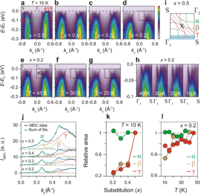
Signature of Kondo Hybridisation with an Orbital-Selective Mott Phase in 4d Ca2−xSrxRuO4
The heavy fermion state with Kondo-hybridisation (KH), usually manifested in f-electron systems with lanthanide or actinide elements, was recently discovered in several 3d transition metal compounds without f-electrons. However, KH...

Giant valley-Zeeman coupling in the surface layer of an intercalated transition-metal dichalcogenide
Spin-valley locking in the transition-metal dichalcogenides (TMDs) holds promise for so-called “valleytronics”, as well as for shaping the collective states that many TMDs host. Since the initial discovery of this phenomenon, the...
Observation of Coexisting Dirac Bands and Moiré Flat Bands in Magic-Angle Twisted Trilayer Graphene
Moiré superlattices that consist of two or more layers of 2D materials stacked together with a small twist angle have emerged as a tunable platform to realize various correlated and topological phases, such as Mott insulators, unconventional...
Reference Systems
Downloads
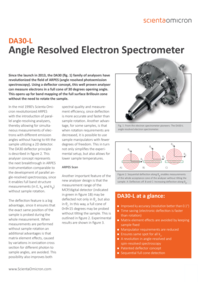
DA30-L: Angle Resolved Electron Spectrometer
Since the launch in 2013, the DA30 family of analysers have revolutionised the field of ARPES. Using a fast electrostatic deflector concept, this well proven analyser can measure electrons in a full cone of 30 degrees opening angle. This opens up for band mapping of the full surface Brillouin zone without the need to rotate the sample and preserves incident and exit angles. The deflection capability ensures fixed spot shape and position on the sample and eliminates mechanical backlash, information depth variations, and angle dependent matrix element effects.
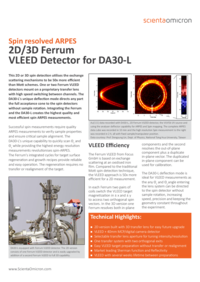
2D/3D Ferrum VLEED Detector for DA30-L
This 2D or 3D spin detection utilizes the exchange scattering mechanisms to be 50x more efficient than Mott schemes. One or two Ferrum VLEED detectors mount on a proprietary transfer lens with high speed switching between channels. The DA30-L's unique deflection mode directs any part of the full acceptance cone to the spin detectors without sample rotation. Integrating the Ferrum and the DA30-L creates the highest quality and most efficient spin ARPES measurements.
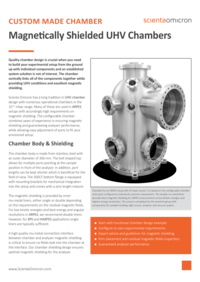
Custom Made Chamber: Magnetically Shielded UHV Chambers
Quality chamber design is crucial when you need to build your experimental setup from the ground up with individual components and an established system solution is not of interest. The chamber centrally links all of the components together while providing UHV conditions and excellent magnetic shielding.
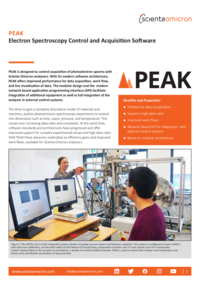
PEAK: Electron Spectroscopy Control and Acquisition Software
PEAK is designed to control acquisition of photoelectron spectra with Scienta Omicron analysers. With its modern software architecture, PEAK offers improved performance for data acquisition, work flow, and live visualisation of data. The modular design and the modern network based application programming interface (API) facilitate integration of additional equipment as well as full integration of the analyser in external control systems.

